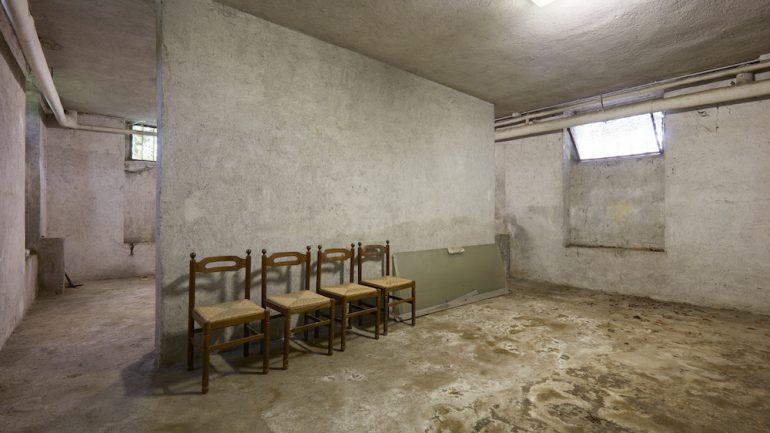Dark, scary basements are a common trope in horror movies, but in real life, you are more likely to confront a dank odor than a ghost. Here’s how to get rid of musty smells in the basement.
The source of dank smells
The most likely source of musty odors is mold and mildew. (Mold can become raised on a surface and comes in a range of colors. Common mildew remains flat on a surface and is brown to gray in color.) Basements are particularly susceptible to mold and mildew because they are below ground and cooler than the rest of the house. Mold and mildew thrive on water, which can come from a variety of sources in a basement, so eliminating the water source is essential to getting rid of musty smells in your basement.
First step: locate the water source
Water infiltrates your basement in three main ways.
The first is condensation. If you have exposed, uninsulated plumbing running along with the ceiling or wall, the basement’s cool air can cause condensation to form on the pipes’ exterior. Condensation can also form on the inside of a window that isn’t energy efficient. The contrast between outside and inside temperatures forms droplets on the pane.
A second possible water source is an actual leak in a pipe. That musty smell might also be caused by groundwater seeping through a basement wall.
Other odor sources
Your basement may also smell because of rodent droppings, or sewer water or gas leaking from a drain line. And iron bacteria — a reddish goo resulting from leaks from iron plumbing pipes — can also contribute to basement funk.
Eliminate the water source
Stopping the water source is the biggest step toward eliminating mold, mildew and iron bacteria.
- Find and repair leaky pipes.
- Remove condensation from pipes with a towel, then snugly attach Styrofoam insulation tubes to every inch of the pipes with zip-ties. Don’t leave gaps on pipe elbows.
- If the basement window is old and single-paned, replace it with an energy-efficient, double-paned one. Otherwise, check and replace any worn, leaky caulk around the window’s exterior..
- Have a sump pump installed for use in water emergencies.
- To eliminate water seeping through basement walls, ensure that rainwater cannot puddle against the outside of the house. The ground should slope down and away from the foundation. Use French drains and gutter downspouts with extensions to channel water out into the yard. If these measures don’t stop the problem, you may have a crack that requires a professional. Seek out a reputable foundation repair company.
Preventing future problems
After stopping water sources, thoroughly clean surfaces everywhere with a mild bleach and water solution to kill mold spores and freshen the air. Tackle mold or mildew stains directly with a stronger bleach solution.
You can also place a dehumidifier in the basement and set it for humidity below 60 percent. Some machines extract moisture from the air into a holding tank. Others have a hose that feeds into a drain, which is much more convenient.
If rodents have been contributing to the musty smell in your basement, set traps until you’ve cleared them out. If the infestation seems severe, hire a professional pest control company.
Related – Stopping Mold In Its Tracks


